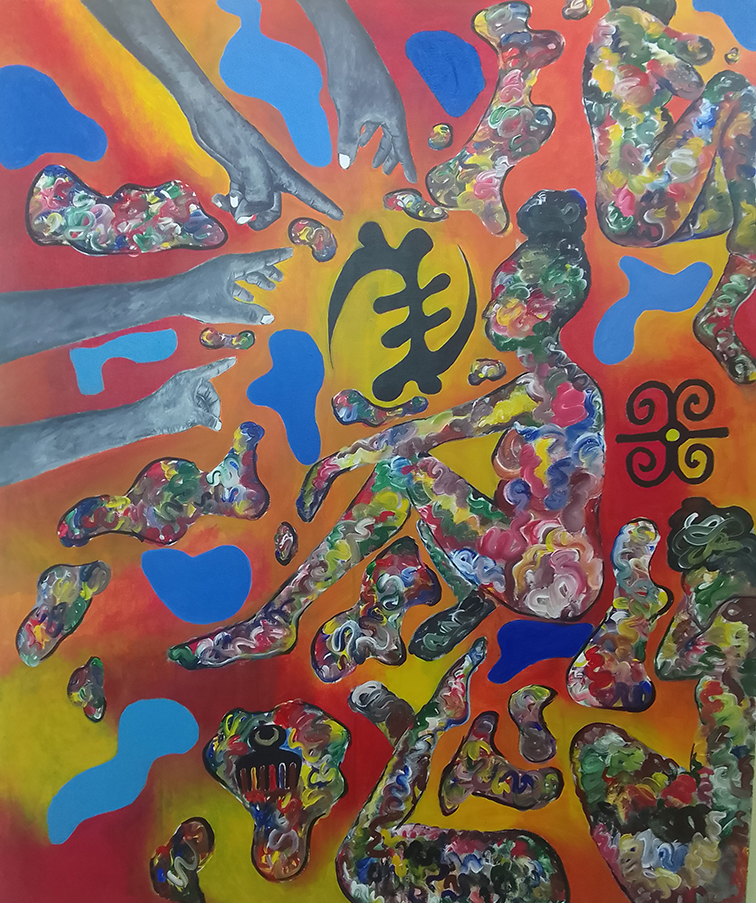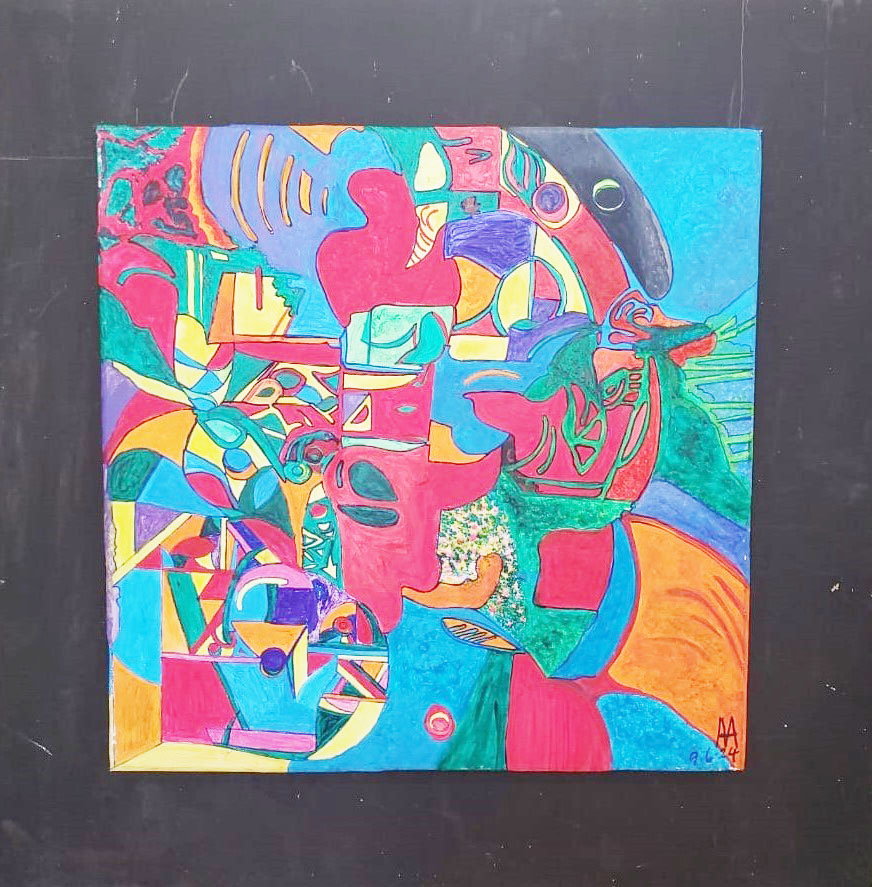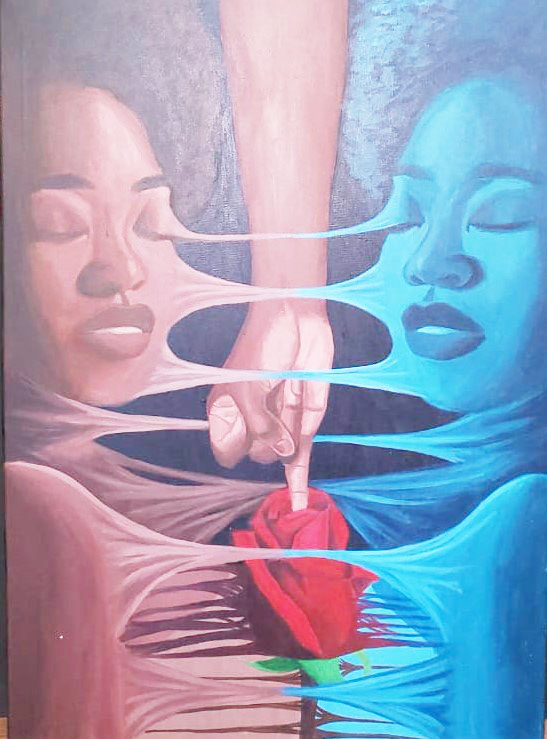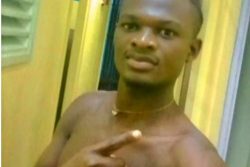 This week I share the Exhibition Overview for the University of Guyana’s Fine Art students’ exhibition Echoes of Resilience currently on at the National Gallery of Art, Castellani House. The last day of the exhibition is tomorrow, Monday, August 19, 2024. The exhibition’s opening reception on August 8 and its paraphernalia were sponsored by ExxonMobil, Guyana.
This week I share the Exhibition Overview for the University of Guyana’s Fine Art students’ exhibition Echoes of Resilience currently on at the National Gallery of Art, Castellani House. The last day of the exhibition is tomorrow, Monday, August 19, 2024. The exhibition’s opening reception on August 8 and its paraphernalia were sponsored by ExxonMobil, Guyana.
Before sharing the overview in the following paragraphs, I note that the works of the graduating students evidence conceptual and technical maturity; boldness in forms, materials, and content; and greater clarity of the ideological basis of their works over that which they shared at last year’s exhibition. The continued professionalisation of their practice is hoped for. Similar progress is hoped for with the junior students whose work will soon be foregrounded in next year’s exhibition.

Overview
Every year, the Division of Creative Arts (DCA) which is part of the Department of Language and Cultural Studies at the University of Guyana hosts an art exhibition of the final year projects of its graduating BA in Fine Art students. Often, work from the major students of incoming Year 2 to Year 4 of the DCA’s Fine Art programme is included alongside the BA graduands. This year is no different. This 2024 instalment features the work of two young artists who will soon be recipients of their well-deserved BAs in Fine Art and the work of one who will receive his equally well-deserved AA in Fine Art. Alongside them, three other students have been chosen to show formative work.
This year’s graduands are Rouchelle Stephens, Tahirih Gerrard, and Aubrey Alves. Together their work forms the core of the exhibition. While Stephens and Gerrard explore intersecting feminist and race concerns, Alves turns his lens on a singular migration narrative. However, the three are unified in using personal experiences to undergird their work. As a consequence, their work is both reflective of their narratives and their socio-cultural collectives of belonging.
Migration is a reality for many of us in Guyana. Family units are disrupted because a parent, a sibling, or another close relation emigrates for the betterment of self or the familial collective. Emigration wishes punctuate the wake and sleep of many, and migration intentions determine actions. Although migration and its implications determine so much of our lives, migration is an under-explored topic in art produced in Guyana. Alves’s sculpture Migration after Trauma unequivocally speaks to migration. He transforms boxes used for imports into suitcases that export paraphernalia of self. He mounts these on a shipping barrel, a container for items sent from family aboard. Meanwhile, Alves’s paintings are more personal outpourings of his traumatic experience which became a catalyst for his outward journey. Small in scale and vibrantly coloured, they are compressions of stories he willingly shares. They are at times illustrative but are often personally symbolic.

Reflecting concerns that have been finding bold exploration in local art and intersecting with global dialogue, both Gerrard and Stephens engage with their cisgender identity and notions of African-ness. In the body of work titled ‘The Garden of Feminine Voices’, Gerrard creates opportunities to “celebrate and amplify the voices of women who have used their talents to provide insight into life from a female perspective.” Furthermore, she states: Historically, the artistic and literary contributions of women have been shrouded by the achievements of their male counterparts […]. While women writers have faced prejudice and have been overlooked and undervalued due to perceptions of lacking intellectual depth, female artists have encountered similar challenges.”
Thus, Gerrard asks that the literary and visual articulations by women be heard/seen and deemed worthy. She also asks that the normative associations of womanhood not be deemed unfortunate circumstances of women’s lives.
Using the prose and poetry of Edwidge Danticat, Olive Senior, and Mahadai Das as a point of departure, Gerrard asks that intrusive practices meant to safeguard young women’s virtue, the repercussions of colonial imprint on black girls, and even transcendence from the Earthly realm as a sort of final migration be contemplated. As she culls from celebrated Caribbean female literary figures, Gerrard draws on her own poetic outlook. She celebrates womanhood, the associated life-giving potential, and the “collective resilience” she sees as engendering the female spirit.
As noted, the work of Gerrard and Stephens intersect around issues of race. While Gerrard responds to Senior’s concern for the loss of culture and self in the face of Eurocentrism and colonial impositions, Stephens is concerned about the physical form of black women and the denials of celebration of their inherent beauty – their curves, textured hair, or melanin tones. For instance, in ‘Pages of Liberation’, Stephens attempts to free black women “from a history that was once their story […].” She uses pages with hand-written records of pejorative statements directed at black women which she has photocopied and used to fashion paper boats. Stephens notes: “Paper boats were the first set of paper craft that I learned to make [and I felt like] I was bringing the innocence of my childhood into my art. Little black girls all around the world once lived a life with pure curiosity of life and as we all grow older that innocence slowly starts to [fade].”
With this ‘tool of innocence’ Stephens attempts ‘an undoing’ of the repercussions of the larger boats that aided in establishing current problems.
Both Stephens and Gerrard occasionally employ Adinkra symbols in their work. Through this simple gesture, they declare their desire to reconnect with a past they admit longing for. Both artists also make sculptures to amplify their ideas in ambitious ways. Together the three graduands push the conceptual landscape of art produced in Guyana.
As the junior students develop their repertoire of skills through several studio courses and increasing exposure to art theory and art history, their studio work is technically and thematically exploratory. For instance, Deborah Pappanah is inspired by music and the hypnagogic phase — the transitional state between wakefulness and sleep. Meanwhile, Shenia Bentick and Marlyn Durga draw on cultural traditions and lived experiences.








